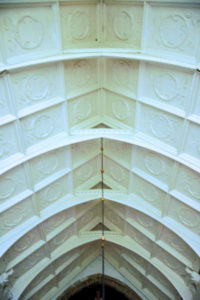Great Ryburgh St Andrew












































































































































































St Andrew's Church Great Ryburgh
Where to find this church
Church Information
St Andrew’s church is located in Great Ryburgh, a small Norfolk village about 5 miles south of Fakenham.
This church is usually open to visitors
* denotes external links that open in a new window



Visiting Great Ryburgh St Andrew
Our latest visit to St Andrew’s in Great Ryburgh turned out to be a most remarkable one. While walking around the church, we met a gentleman in the churchyard who was working on a new building to the south of the church (read more about it here). It turned out that his name was Peter Trent, the one responsible for the new build. We began to talk to him, and he offered to show me the areas of the church usually not open to the public. Thus I was able to take photos of the interior of the tower, and from the gallery where to organ is located. When he learned about my website, and that I had already visited all Round Tower Churches in East Anglia but one (Hengrave in Suffolk), he offered to get into contact with Hengrave Hall, as he said that he is a bell-ringer, and “bell-ringers get into every church!” That is what he tried, but alas, to no avail. But it was great to meet such a wonderful and friendly guy! If you read this, Peter: thanks again, it was really nice to have met you, and I hope we will be able to meet again in the near future!
But now to the church itself: the two lengthy transepts and the long chancel give this church a cruciform ground plan. The north-west quoin of the nave is formed of blocks of ferricrete, an indication of early 11th century work for the first church here. The tower is a bit later, the first ten feet made largely of ferricrete, a local rough brown stone, then it is made of flints. Above the ridge of the nave the flintwork alters, and probably this was done in the 14th century when the octagonal belfry was added. A modern west doorway into the tower is now in position, and above it is a plaque with the Arms of the Buttes Family, who have memorials inside the chancel.
The windows are mostly large Perpendicular ones from the 15th century, but the transepts were added in the 14th century. The south transept still has a particularly fine Decorated window of that time, with double-reticulated tracery. The south porch was built in 1891.
The tower arch has a wide rounded arch, below which stands the font, which may have been re-cut in the 19th century. At the west end of the nave is an organ gallery, now accessed from the tower through the upper doorway, above the tower arch, which has a triangular head.
The north window of the north transept contains much heraldic glass, including the heraldry of the Buttes and Bacon Families. The south transept is separated from the nave by a modern white painted 20th century screen in traditional style, in which the lower part shows eight Saints, many with local connections: Remigius, Guthlac, Etheldreda, Andrew, Thomas, Withburga, Walstan and Felix.
The chancel arch supports a Rood beam with the Crucifix, St Mary and St John, given in 1943.
Against the north wall of the chancel is part of a tomb chest for Thomas Buttes †1592, with parts of a different later memorial forming the top half, with the arms of Buttes and Bacon. The chancel fittings were designed by the famous architect Sir Ninian Comper, for the restoration in 1910, which included plastering the chancel ceiling.
Conclusion: large open village church with plenty to see



